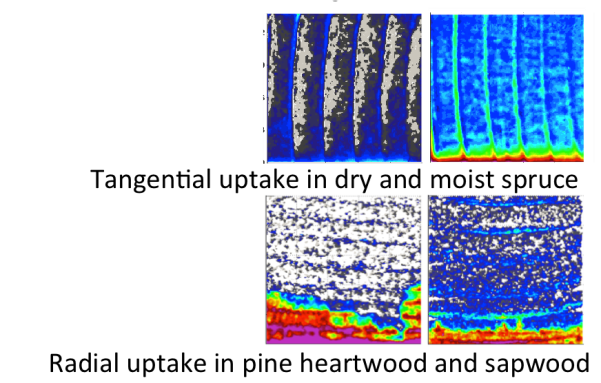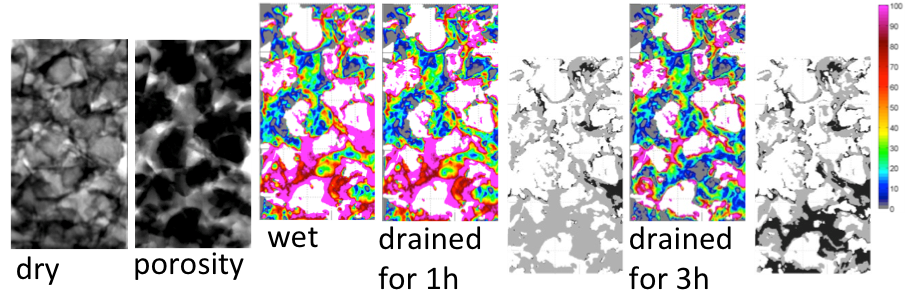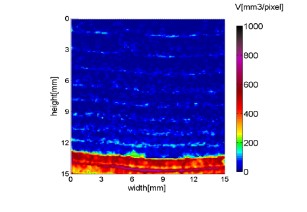Liquid redistribution
Liquid redistribution in porous materials involves many different phenomena.
Fluid transport in heterogeneous multiscale porous media is studied experimentally to elucidate the physics at play and to provide modeling validation datasets.
Porous asphalt, designed to reduce aquaplaning and noise levels in highways, displays a complex systems of very large and very small interconnected pores.

Water uptake in wood presents various wetting patterns, as imaged with neutron radiographs. Those patterns are clearly related to the location of earlywood vs latewood, as well as to the available paths.
Another example is the study of the influence of water sorption and swelling on liquid transport in wood. Neutron imaging is used to document the time dependent and spatial distribution of two liquids, one polar (water) and one nonpolar (decane) during liquid uptake in the three orthotropic directions of wood samples of different species.

